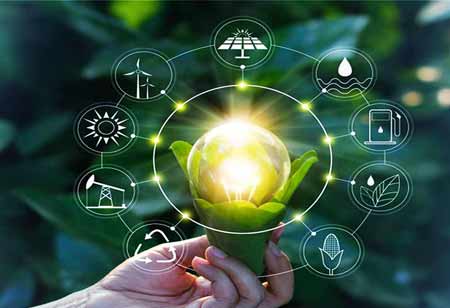Thank you for Subscribing to Energy Business Review Weekly Brief
The Increasing Significance of Biofuel
Biofuels, derived from plants and including biodiesel and bioethanol, has been advocated as an environmentally acceptable alternative to fossil and petroleum fuels.

By
Energy Business Review | Saturday, April 01, 2023
Stay ahead of the industry with exclusive feature stories on the top companies, expert insights and the latest news delivered straight to your inbox. Subscribe today.
Nanostructured electrode materials use to create biocompatible microenvironments for trapping biomolecules and improving electron-transfer kinetics in next-generation biofuel cells.
FREMONT, CA: Biofuels, derived from plants and including biodiesel and bioethanol, has been advocated as an environmentally acceptable alternative to fossil and petroleum fuels. The primary benefit comes from the well-known fact that all petroleum fuels emit carbon dioxide (CO2). In contrast, biofuels only return the carbon to the environment that the plants they derive from absorbed while growing, making them carbon neutral—biofuels position to address one of the most significant aspects of climate change. Biodiesel is now the most popular form of biofuel, mainly because it can get used in regular diesel engines, which has been allowed by automakers around the globe.
Several characteristics of biofuels contribute to the green image of renewable energy sources. Several celebrities and eco-conscious individuals have begun using biofuels in their vehicles.
Although it has a little lower fuel economy than traditional diesel, it burns cleanly, contains no sulfur or aromatics, and has superior lubricant and biodegradable qualities. As alternatives to fossil fuels, biofuels offer the potential to increase energy security and quality while decreasing global warming. Biofuels get derived from biomass, such as agricultural waste, wood, energy crops, the organic portion of municipal solid waste, manure, and algae. Biofuels are produced from recently living biomass, whereas fossil fuels derive from ancient biomass.
The solid, liquid and gaseous biofuels include wood pellets, bioethanol, biodiesel, and biogas. First-generation biofuels, derived from food and feed crops comprising sugars, starch, and vegetable oils, have been extensively studied. These crops are accessible in limited numbers, and their use as biofuel substrates places food and fuel in direct conflict. Several types of non-food biomass, such as animal waste and plant residue, which are primarily lignocellulosic biomass, can get used to making second-generation biofuels. In addition to being derived from non-food resources, second-generation biofuels have fewer GHG emissions than first-generation biofuels.
Biofuel cells are a bioenergy device of interest in numerous fields, including bioelectronics, biomedicine, and applied bioelectrochemistry. The development and use of biofuel cells have experienced significant obstacles, primarily because of their low power capacity and inadequate stability during cycling. Intensive efforts devote to nanostructured electrode materials' new design, structural engineering, and architecture. It helps to develop next-generation biofuel cells with enhanced performance, for example, by creating biocompatible microenvironments for trapping biomolecules and enhancing electron-transfer kinetics. It provides advancements in the research and development of enzymatic biofuel cells employing graphene-supported functional composites as electrode materials to improve overall performance.






